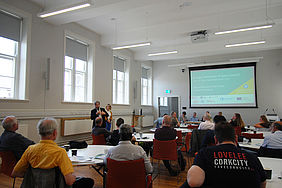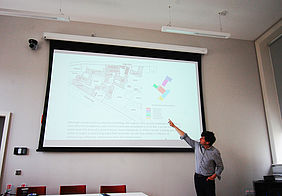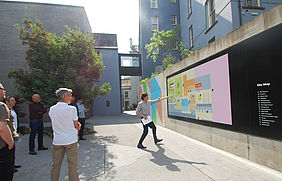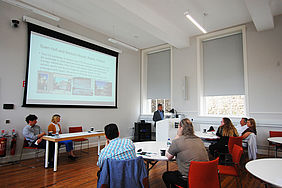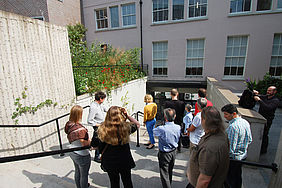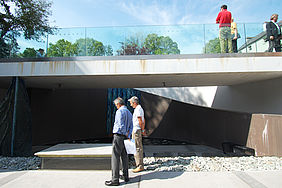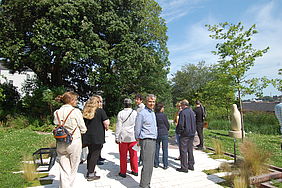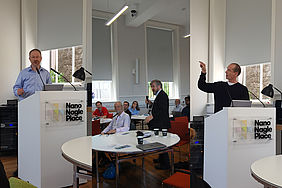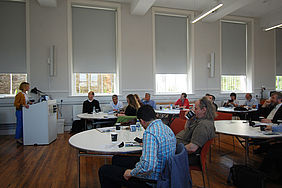The Energy Pathfinder project was launched on Thursday, 27th June at a public seminar held at Nano Nagle Place in Cork. The Energy Pathfinder project is supported by the Northern Periphery & Arctic (NPA) region Europe and involves partners from Ireland, Sweden, Finland and the Faroe Islands with members from each partner organisation attending the seminar.
The morning began with a warm welcome by Caitríona Courtney of NCE Insulation, Energy Hub based in Cork city. Caitríona introduced Jose Ospina, Project Manager of the Energy Pathfinder project from Cork Centre for Architectural Education. Jose introduced the objectives of the project and the aim of approaching near zero energy in historic buildings. Jose detailed five different demonstrator sites based in each partner country and how these historic buildings display challenging characteristics that make them iconic and unique. Jose outlined the project objectives and the aim of supporting owners of historic buildings by building an on-line Toolkit that can be used to chart how Near Zero Energy standards can be achieved.
Gareth O’Callaghan, Conservation Architect and Director at Jack Caughlan Architects Cork then gave a presentation about the wonderful complex of buildings at Nano Nagle Place and the process of co-design between owners, users and architects to preserve and renew the historic site which dates to 1771.
Gareth then gave a tour of Nano Nagle Place and how the heritage buildings had been thoughtfully regenerated and repurposed for the benefit of the community. We walked through the gardens in the rare sunshine and experienced a serene haven hidden in the urban landscape of Cork.
We were then given a presentation on Historic Environment Scotland’s (HES) involvement with other European Collaboration Projects by Carsten Hermann, Senior Technical Officer, Historic Environment Scotland. Carsten spoke about Adapt Northern Heritage, a project that supports communities and local authorities to adapt cultural heritage to coincide with the impact of climate change and natural hazards. Carsten then spoke about Energy Pathfinder and the possibility of historic stone-built cottages as demonstrators based on the Orkney Islands in Scotland.
We had our final presentation by Bárður í Baianstovu from Landsverk, Faroe Islands who discussed the retrofit and renovation of a wooden Vicarage built in 1854 in Viðareiði. Bárður detailed the process involved when working with the historic site including the removal of most modern materials, insulation and the substitution of fossil fuel for renewable energy.
The seminar closed with a Panel Discussion where the speakers were asked further questions about the Energy pathfinder project. Discussion led to the formation of an advisory board to the project to involve and build upon different experience and expertise going forward.
